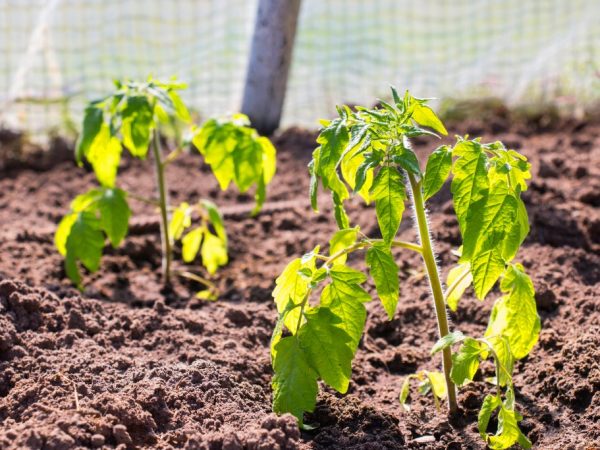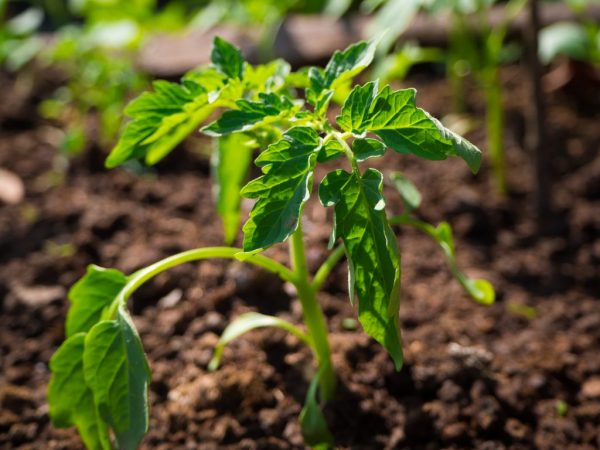Features of hilling tomato
Hilling is included in the list of mandatory care items for many crops, including tomatoes. The agrotechnical technique is loosening and sprinkling moist soil to the lower parts of the plant. Practice shows that the carried out hilling of tomatoes contributes to the growth and volume of the root system, and therefore to an increase in the yield of seedlings.

Features of hilling tomato
Benefits of the procedure
Hilling tomatoes helps to achieve many goals at once:
- creation of natural soil drainage to drain excess water (prevention of fruit wateriness and root decay);
- water ingress during watering directly into the hole, and not into the aisle;
- creation of a natural water supply;
- improved air permeability of the topsoil;
- strengthening of the root system and the formation of new roots;
- prevention of lodging of tall varieties of tomatoes;
- strengthening the stems and preventing them from breaking off during the fruiting season (even with a rich harvest, the bushes will not need tying);
- assistance in adverse weather conditions (sharp gusts of wind, frost, etc.);
- prevention of soil leaching in conditions of heavy rainfall;
- effective weed control;
- reducing the risk of spreading many types of fungal diseases and insect pests.
Rolling the soil at the stage of formation of side shoots (stepchildren) will strengthen them and make it possible to grow an additional crop.
Is hilling necessary
If all the rules of agricultural technology are observed and the culture is completely healthy, it is quite possible to do without hilling. A healthy plant is one that receives a sufficient amount of useful elements for growth and development. This state can be achieved only if the soil is properly processed and all the points of care for tomatoes are completed on time.
Visual signs that the plant does not need hilling:
- a large number of ovaries and flowers on seedlings that do not dry out or fall off;
- healthy, strong stems of intense green color.
A weakened seedling without such a procedure is subject to a decrease in yield due to a lack of oxygen, moisture or nutrients. In some cases, such a deficiency can even lead to the death of the plant.
Frequency and timing

It is necessary to carry out hilling regularly
The optimal time for hilling is also determined by visual signs. The lack of useful elements on the seedling is expressed in the form of medium-sized white bumps at the base of the trunk. With their help, the plant forms the rudiments of additional roots in order to eliminate the deficiency.
Even tomatoes planted at the same time can experience different nutritional needs, respectively, forming additional roots or being content with the available ones.
Do not huddle planted tomatoes that have not yet formed rudimentary tubercles.For such seedlings, the procedure will be useless and potentially dangerous if the poured soil disrupts the circulation of oxygen.
Tatiana Orlova (Candidate of Agricultural Sciences):
After closing the rows, hilling is not carried out, because it can do more harm than good: you can break tomato shoots and knock down the resulting green fruits.
Hilling schedule
In most cases, the procedure is performed according to the following schedule:
- For the first time, it is necessary to huddle tomatoes one and a half to two weeks after planting seedlings in open ground, when the seedlings have already been adapted to new conditions.
- The procedure is repeated after the appearance of a bluish color at the lower part of the stem (this is evidence that the additional roots have begun to grow and they need additional stimulation).
- Usually, it is necessary to spud growing tomatoes twice during the entire growing season. But sometimes the procedure may be required for plants more times (when planting in a soil poor in nutrients, in unfavorable climatic and weather conditions). For such seedlings, hilling is repeated every time the plant begins to form the rudiments of additional roots.
Hilling mechanism
For hilling, a soil pre-moistened by irrigation or rain is used (the period of moistening depends on the place of cultivation). In conditions of lower temperatures, the soil can be combined with peat, humus, compost or sawdust to warm the seedling.
- It should be remembered that the root system of the culture is quite delicate and can be easily damaged by rough hilling - using dry soil or excessively deep loosening.
- Using a hoe or a small rake, it is necessary to gradually add soil from the aisle to the base of the tomato. If there is not enough land in the garden, you can use the brought soil by wetting it in advance. Experienced gardeners recommend first rolling all the seedlings in a row on one side, and then moving on to the other, and not hilling each plant separately. This will help save time and clean up the dirt mounds.
- Due to the redistribution of the soil with a hoe or a rake, the arable layer is loosened and saturated with the oxygen necessary for the culture. And the formed furrows from the hoe between the rows will retain water after irrigation or precipitation, forming a natural reserve of moisture.
Hilling of greenhouse tomatoes and seedlings in open field conditions has a number of specific features due to growing conditions.
Hilling in greenhouse conditions
For hilling seedlings in the greenhouse, it is necessary to water them abundantly one day before the procedure. The height of the protective mound for the lower part of the stem should be 8-10cm. If greenhouse land is not enough, you can use prepared soil from the garden.
To prevent shedding, the resulting hill is recommended to be strengthened with pieces of roofing material, slate or plywood rolled in the form of a glass. For tall varieties, homemade boxes made of thin boards are used as reinforcement. For low-growing tomatoes, simple metal or plastic rings planted on a sprinkled hill are suitable.
Hilling in the open field
When performing the procedure on the open ground, the soil requires moistening (abundant watering or heavy rain) a couple of days before the hilling begins.
During loosening of the soil, it is necessary to clean it of weeds, weeding and removing plant residues. Only after complete cleaning of the soil can you begin to form stem hills from it. The soil for the creation of each hill is collected from a radius of about 15-20 cm.
The troughs formed during the distribution of the earth do not need to be smoothed. They will serve as a reservoir for long-term storage of moisture after irrigation (especially valuable in drought conditions). The procedure is best performed early in the morning or late in the evening, with moderate amount of sunlight and heat.
Conclusion
Hilling a tomato creates an air and moisture-absorbing layer that promotes the growth of the root system and increases the yield of tomatoes, prepares the stem for effective control of insect pests and fungal spores. The procedure is indicated for all seedlings in indoor and outdoor conditions with a potential deficiency of nutrients. On average, hilling is carried out 2-3 times per vegetation cycle and greatly increases the chances of harvesting a rich and high-quality crop.



